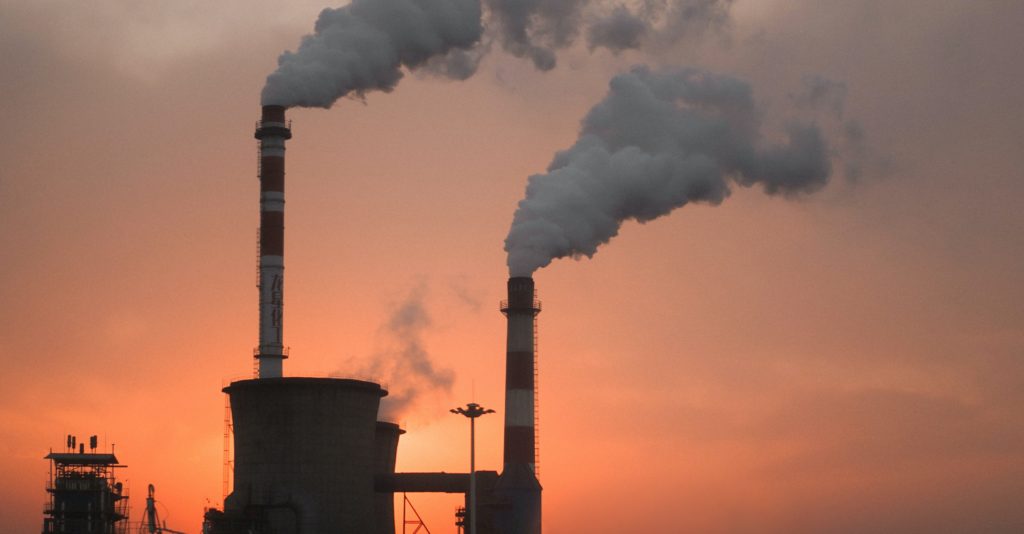
Can manufacturers and suppliers identify greenhouse gas emissions in a way that is mutually beneficial for their business?
As each year passes, the impacts of climate change feel more immediate and daunting.
According to a recent report from the World Bank, despite encouraging trends, action on carbon pricing is nowhere near where it should be – covering only a small part of global emissions at prices too low to significantly reduce greenhouse gas emissions.
Facing the challenges created by greenhouse gas emissions and the market demand for sustainable products, Monash Business School’s Dr Xin Ma has studied supply chains and the possibilities of making manufacturing companies more involved in decisions around emissions.
He and his co-authors developed a way to assist manufacturers in sourcing contract and pricing strategies under the schemes of pricing carbon.
Reducing pollution and improving health
While manufacturers are already working on ways to lower greenhouse gas emissions, it is an ongoing challenge to understand just how many emissions may be hiding in the materials they purchase from their suppliers.
Firms such as Siemens AG have established their own sustainable goals.
“Siemens has built green factories to implement a green production cycle, that is, one in which green materials are used in products to help preserve the environment,” Dr Ma says.
“But in order to provide sustainable products, manufacturers have to purchase eco-friendly materials from suppliers.”
The challenge here is – how do manufacturers source sustainable materials as inputs when the green information of raw materials is provided by suppliers? How can they trust this information?
Dr Ma from the Department of Management looked at using the procurement contracts between manufacturers and suppliers as a device to help firms determine the green information in their supply chain.
“In many cases, suppliers do not disclose complete details about their products, especially their core products, and may even conceal information about the environmental friendliness of materials used,” Dr Ma says
Evaluating the carbon footprint
The reason, he says, is straightforward – suppliers take a tremendous amount of time and capital to evaluate their carbon footprint.
The confidential green information lurking in the background can destroy all the good work the manufacturer has undertaken in this process.
For suppliers, the decision to offer environmental products to meet sustainability targets is costly, especially improving its production technologies.
Dr Ma explains that due to the enormous cost pressure, suppliers would not be willing to take risks to offer sustainable products.
“The manufacturer must estimate the value of the embodied carbon information of raw materials to control its carbon emissions volumes and corresponding cost,” Dr Ma says.
“It is challenging for a manufacturer to quantify the environmental costs and to choose environmental materials from upstream suppliers to reduce emissions of their supply chain when facing asymmetric green information of raw materials.”
As a consequence, the emissions which are incurred by suppliers to produce raw materials will be transferred to manufacturers during production processes.
The researchers focused on the embodied carbon from transforming the raw materials into final products, known as the “cradle-to-gate.”
“The embodied carbon not only includes measuring the carbon emissions to produce raw materials but also includes other carbon emissions from the manufacturing processes that occur to make final products,” Dr Ma says
Building the model
But what if the manufacturer could unearth this information by determining a measure for each of the suppliers?
Dr Ma has developed such a concept. He calls it the green degree and it determines how many sustainable or eco-friendly materials are in the end products.
“This is a measure that I have proposed to evaluate the sustainable performance across the supply chain,” he says.
Take the example of a restaurant chef dealing with suppliers. If she wants to produce the best tasting and most organic dish, she will deal with organic vegetable suppliers. While they have certificates to show they use an organic process, how can the chef be 100 per cent sure that this is true?
“She can’t; this is what we call moral hazard and asymmetric information,” Dr Ma says. “your supplier’s behaviour and all details and ingredients of a product cannot be fully observed.”
Revealing hidden emissions
But if we apply this example to raw materials from suppliers who do not reveal information about unit emission rates of raw materials and other relevant data, the manufacturer can use price in a way the chef does – to help maximise profit and improve supply chain sustainability, especially delivering value in making green products and reaping emissions trading benefits.
How suppliers bidding for the contract helps to reveal the information
In the study, the contracts included a series of payments and the order quantities; the suppliers were subsequently invited to bid for the contracts.
Dr Ma says in the restaurant example, looking at the menu the different items of food has different prices. The chef knows that for the vegetables to be organic they will be more expensive. In the same way, manufacturers can monitor suppliers.
“The contracts will help manufacturers screen the suppliers and then they can choose the best ones,” Dr Ma says.
“Those manufacturers who want fewer greenhouse gas emissions, means they are more likely to pay more to encourage their suppliers to make fewer emissions and more sustainable materials.”
If we go back to the green degree measure Dr Ma has developed, with respect to profits for the firms in the supply chain, both the manufacturer and supplier can choose a higher ordering quantity is greater when the green degree of a supplier is higher.
Greenhouse gas emissions trading schemes
In practice, different types of environmental regulations have been designed and implemented to curb global emissions.
Emissions trading scheme, as a market-based mechanism, has been successfully implemented in the United States of America and the European Union, especially for companies in carbon-intensive industries.
Constrained by carbon emissions regulations, the contract process that Dr Ma and his co-authors have suggested will help manufacturers to deal with suppliers who can provide eco-friendly materials.
In this way, the company can better determine the emissions and be able to trade those emissions.
“An efficient emissions trading policy can be established to guide the manufacturer on how to balance its emission allowances,” he says.
“The upshot developing this model is that it can help to provide insight into the procurement issue and give effective decision support for both the manufacturer and suppliers,” Dr Ma says.


